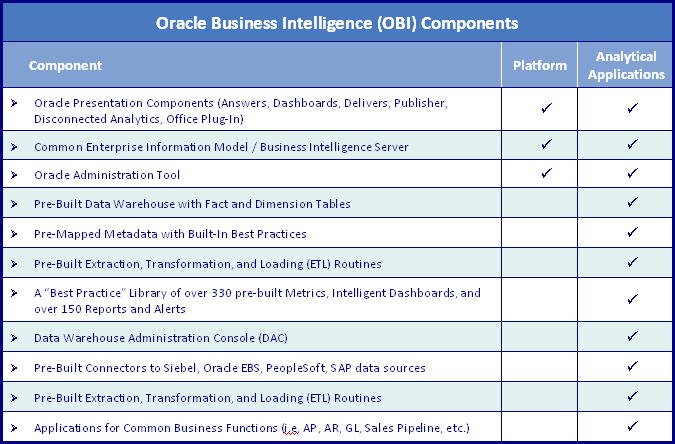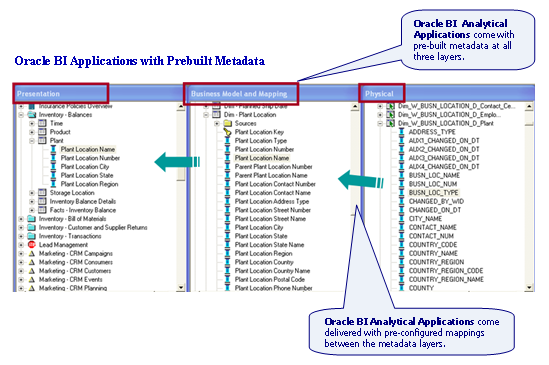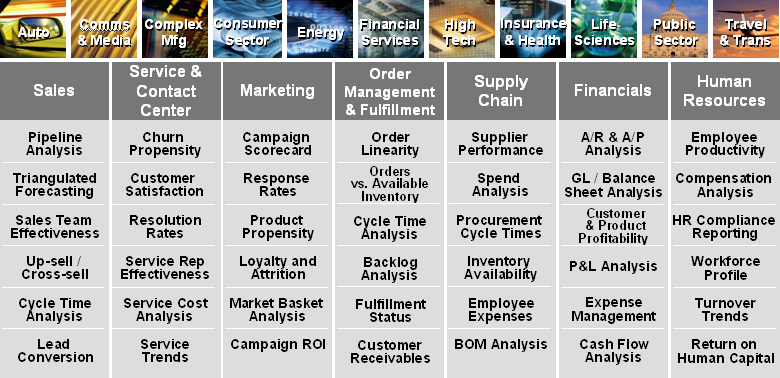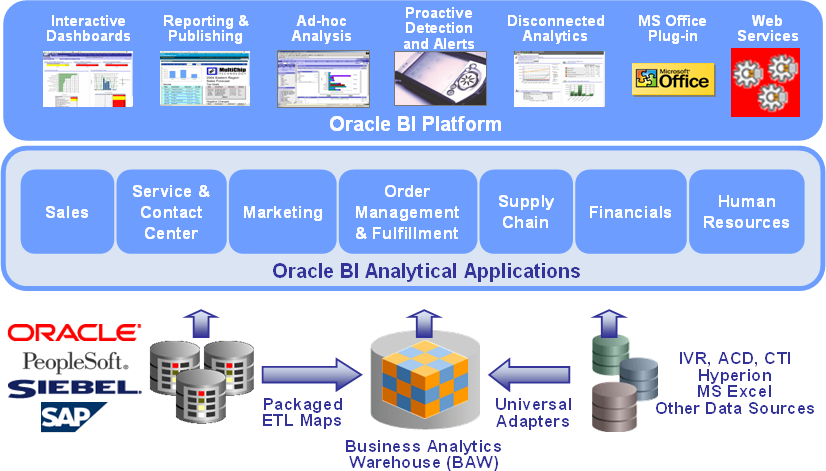Differences in Oracle BI (Platform vs. Analytical Applications)
A key way to understand the differences between the Oracle BI Platform and Oracle BI Analytical Applications is to identify that the platform contains the environment and tools for custom building business intelligence solutions, while the analytical applications contain complete, pre-built solutions that can be rapidly configured. Oracle BI Analytical Applications utilize all of the tools within the Oracle BI Platform as well as several additional tools, and all of the components of the Oracle BI Platform are bundled within Oracle BI Analytical Applications. Moreover, within the Analytical Applications, Oracle has leveraged its experience in providing industry-specific business solutions to deliver comprehensive and fully-inclusive business intelligence solutions for numerous common business functions.
Another important concept in the differentiation of the Oracle BI Platform and Oracle BI Analytical Applications is the amount of content delivered in the metadata or middleware layer. In a nutshell, the metadata layer within Oracle BI creates a semantic model over an organization’s entire data set, consists of the information that characterizes data, and describes how the organizational data should be presented by the user interface of the business intelligence environment.
The Oracle BI Platform is delivered without any pre-existing metadata as it only contains the tools for developing metadata.
However, Oracle BI Analytical Applications come delivered with a rich set of metadata elements at all three layers (physical, logical, and presentation) and come delivered with the mappings between the levels already being developed and configured as well as physical connections already being defined.






